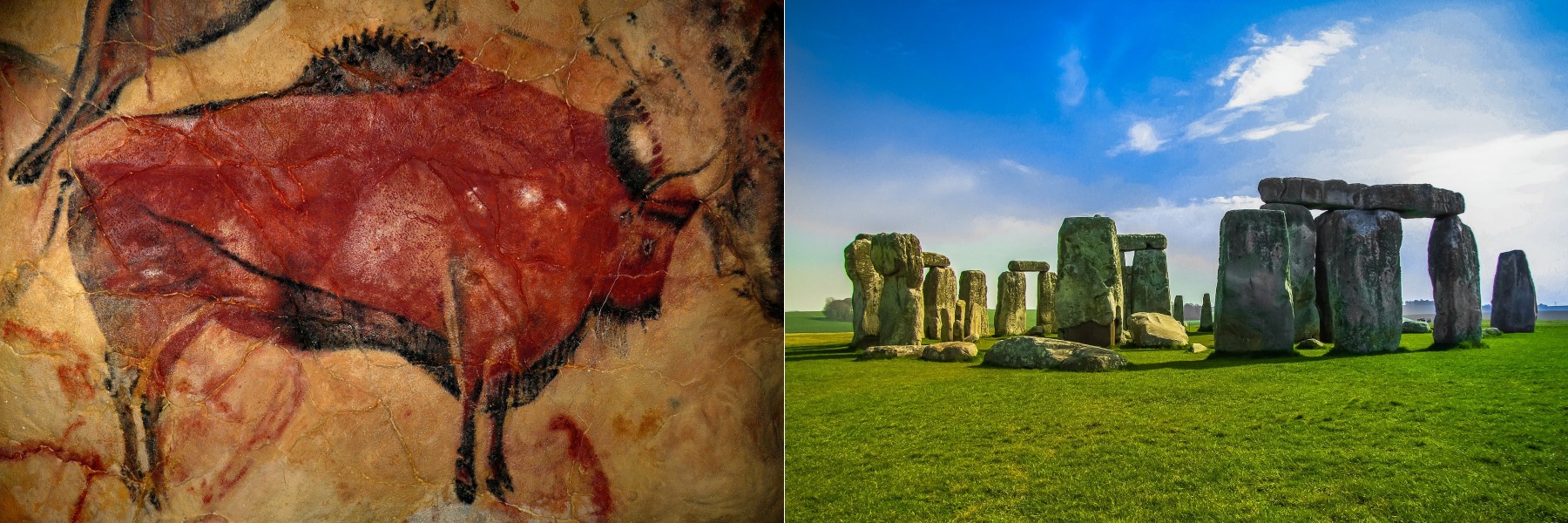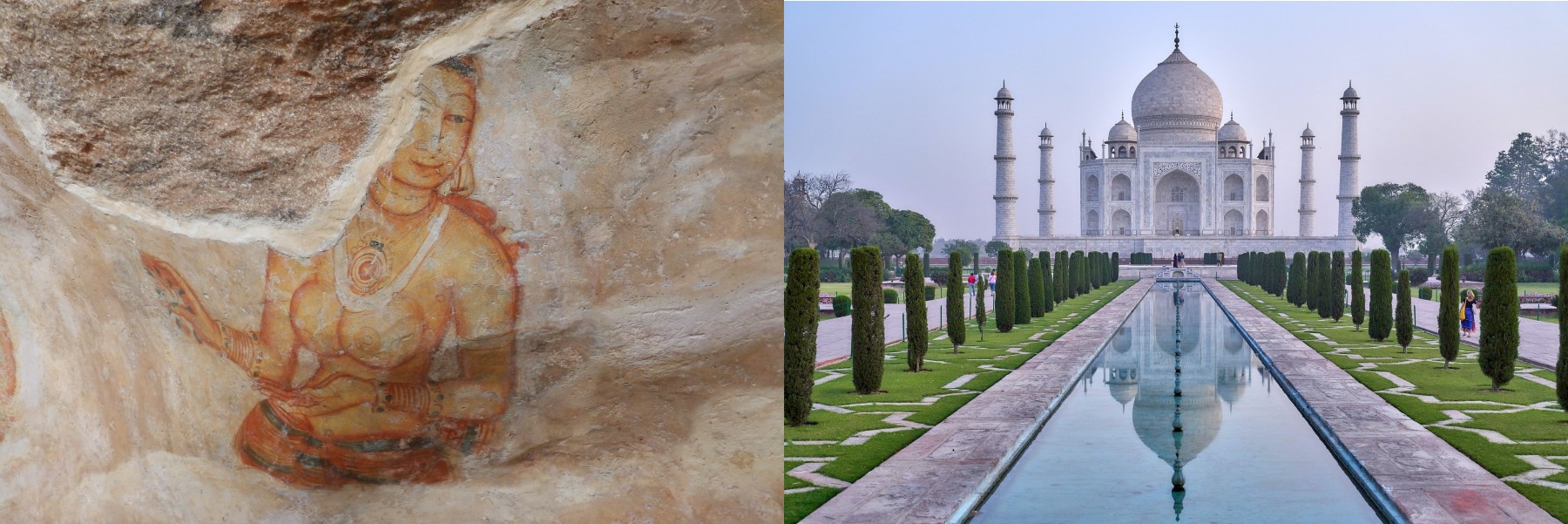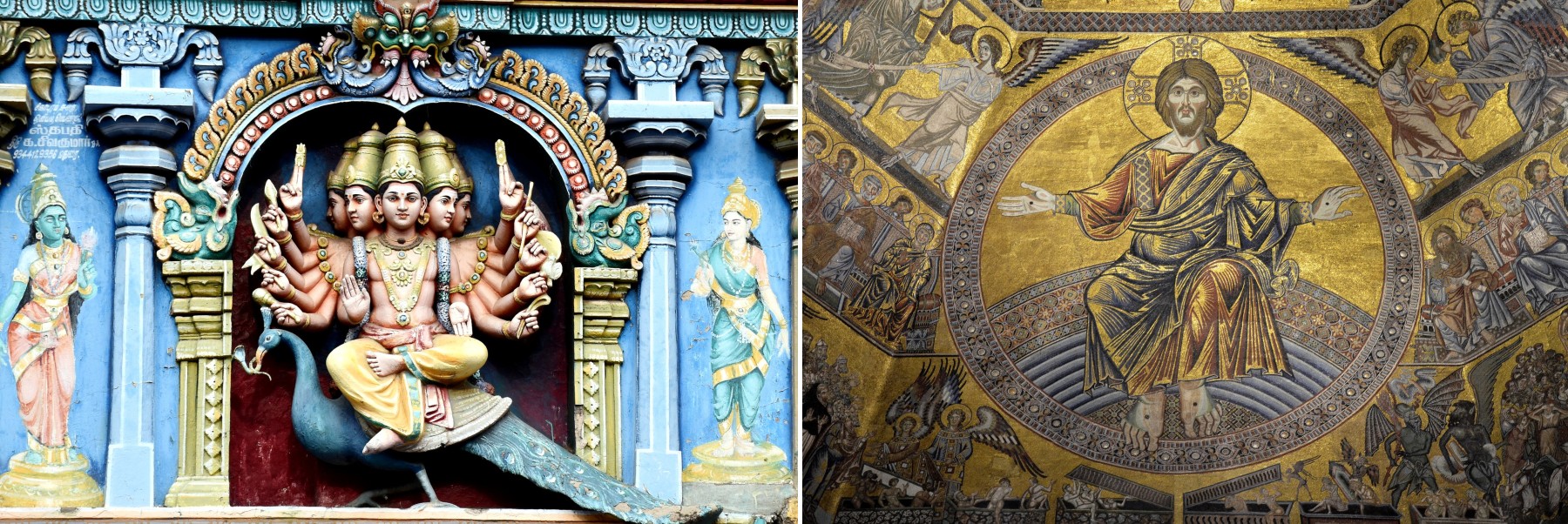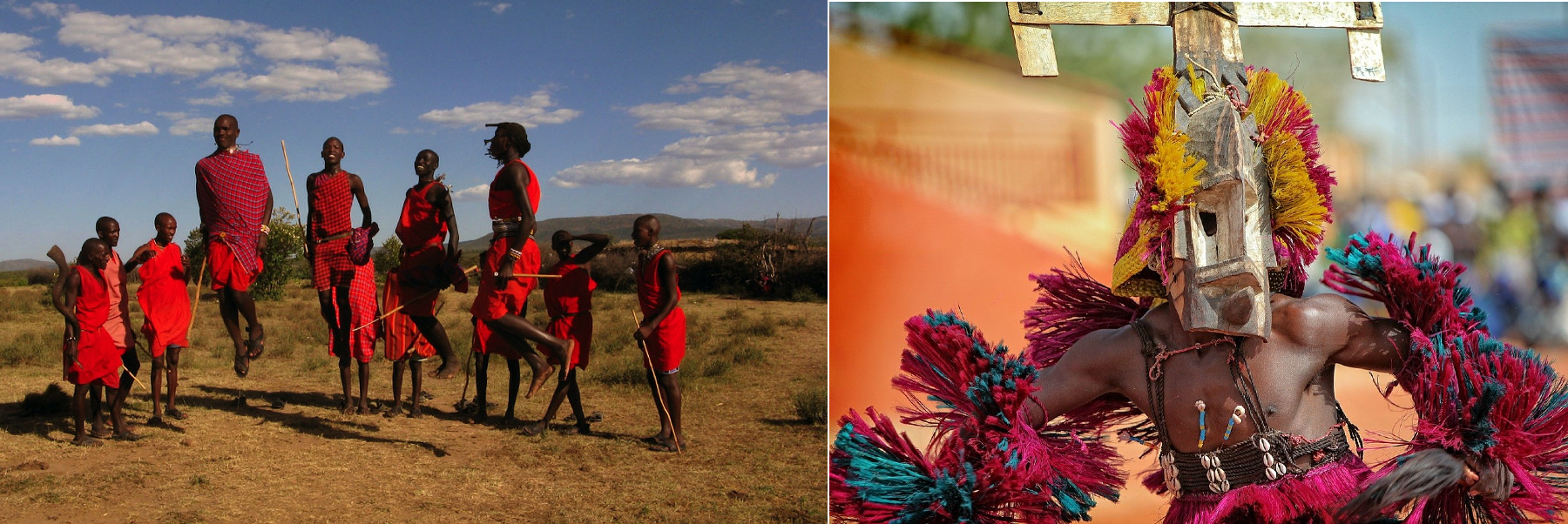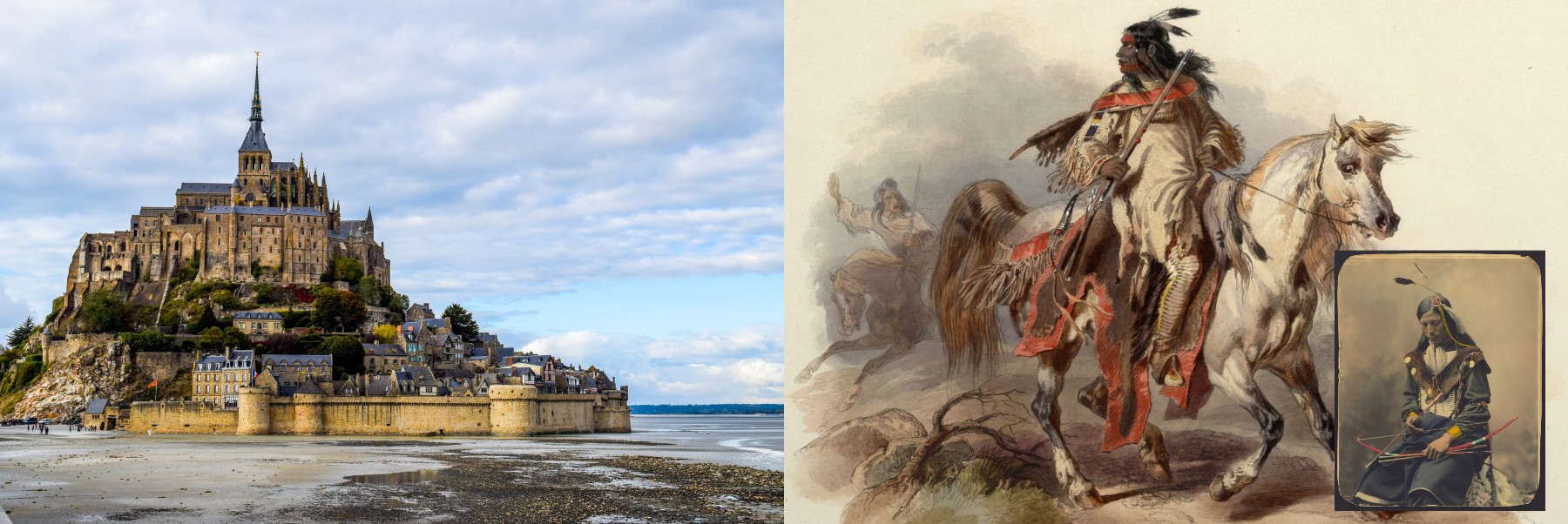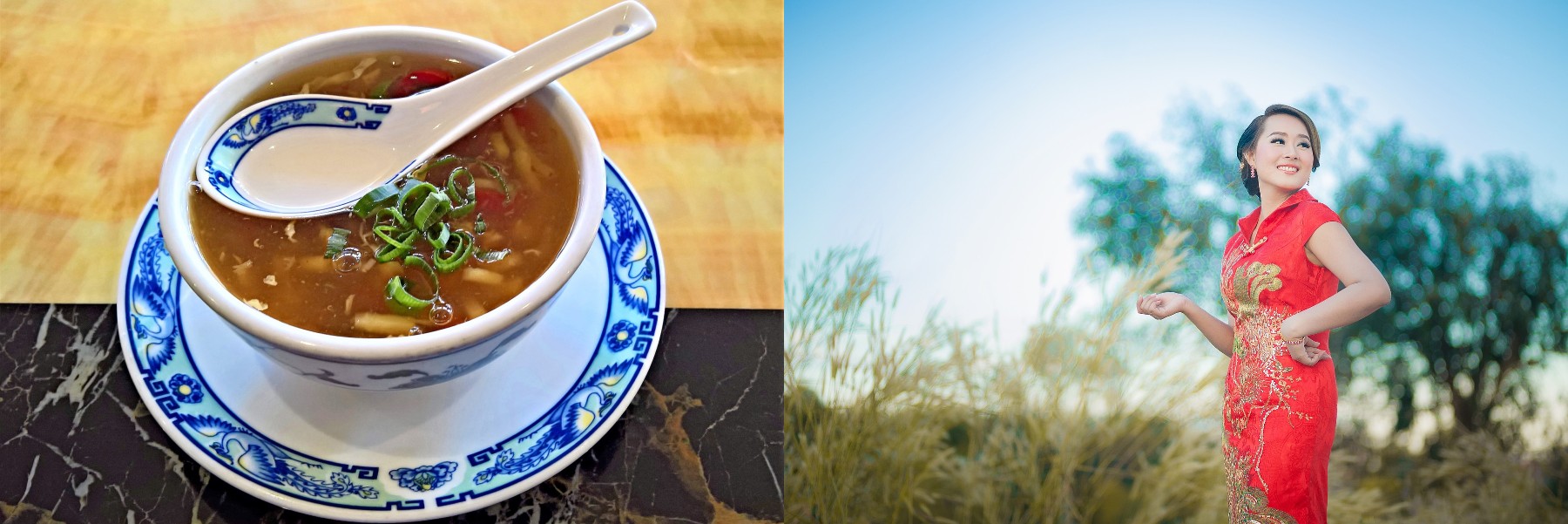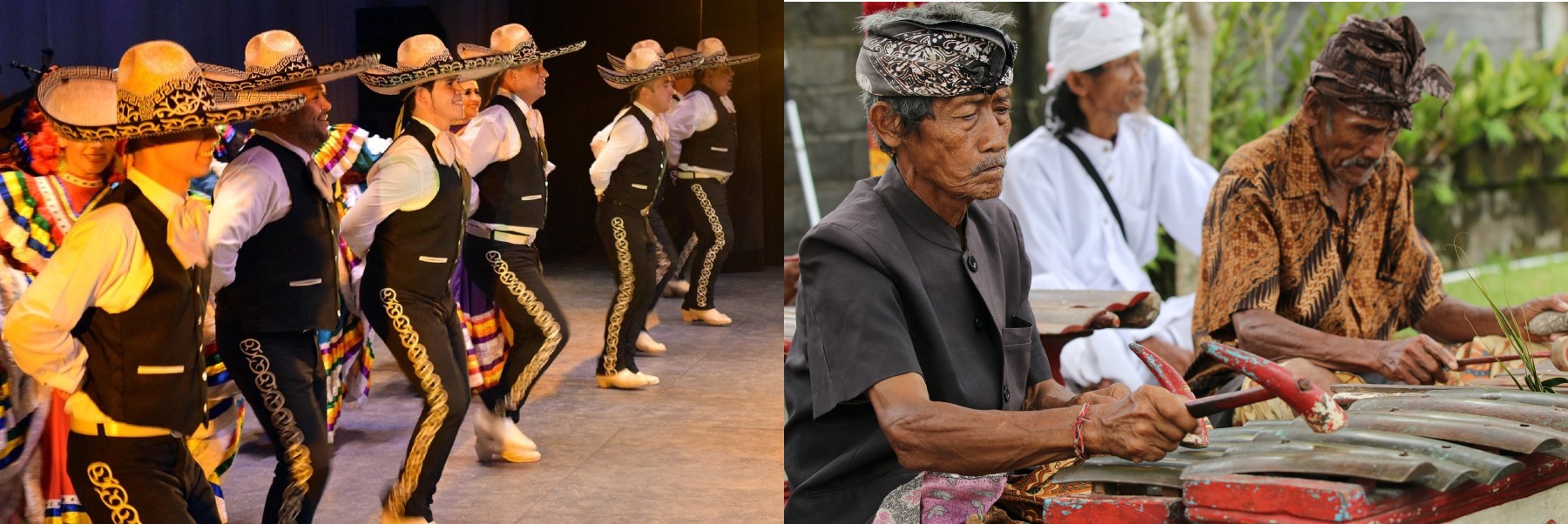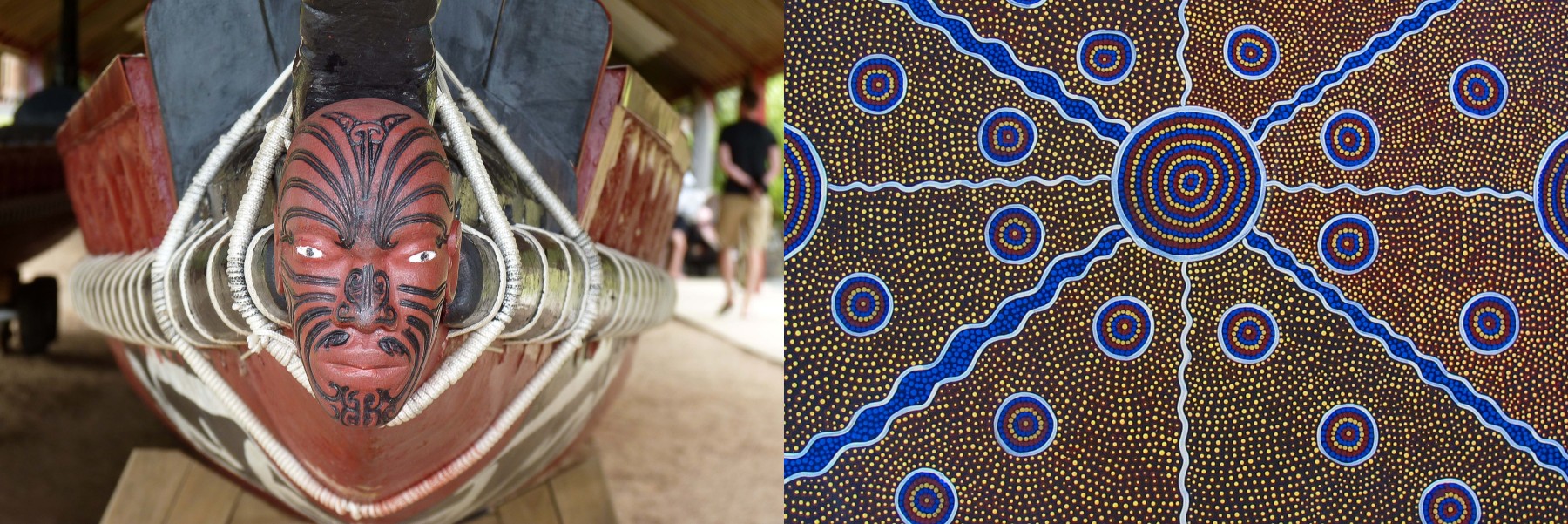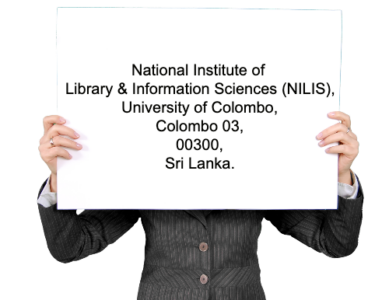NILIS Research Symposium 2021
You have reached an outdated Web page. Please visit https://nilis.cmb.ac.lk for current information.
 NILIS Research Symposium is an annual event of the NILIS, University of Colombo. This year, the NILIS Research Symposium (NRS 2021) will be virtually held on 24th January 2022 starting from 9.30 am onwards in online mode. It is available free of charge for presenters and participants.
NILIS Research Symposium is an annual event of the NILIS, University of Colombo. This year, the NILIS Research Symposium (NRS 2021) will be virtually held on 24th January 2022 starting from 9.30 am onwards in online mode. It is available free of charge for presenters and participants.
This year’s theme is Cultural Heritage: Bridging the Past, Present, and Future Through Libraries, Museums, and Archives. You may download the full program from here. Last year (2020), it was conducted under the theme “Challenges and Opportunities for Libraries in the New Normal”. The Abstract Book of the NRS2020 can be downloaded here.
This is an introduction to the main symposium theme, “Cultural Heritage: Bridging the Past, Present and Future Through Libraries, Museums, and Archives”.
Definitions:
Cultural heritage includes the sites, things, and practices a society regards as old, important, and worthy of conservation. The subject is of increasing popularity among scholarly communities too (Brumann, 2015).
Cultural heritage is the legacy that we receive from the past, experienced in the present, and transmit to future generations. The economic and legal definitions of the word refer to the concept of ‘cultural property’ (Pelegrini, 2008).
In general, cultural heritage is people’s memories, both individual and shared (Baker, 2013a).
What is included?
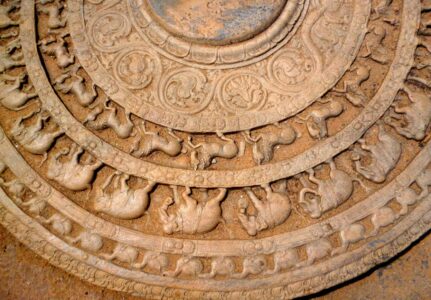
Moonstone, a stepping stone into ancient temples from Sri Lanka
It includes the inheritance of both the physical artifacts as well as intangible attributes of society. Physical artifacts include works of art, literature, music, archaeological and historical artifacts, as well as buildings, monuments, and historic places. The intangible attributes comprise social customs, traditions, and practices often grounded in aesthetic and spiritual beliefs and oral traditions (Willis, 2014). Most of the time, these artifacts are unique. They are also irreplaceable.
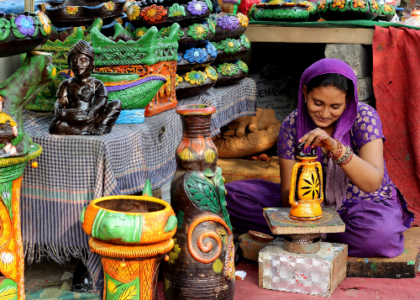
Colorful Pottery from India
Small artifacts such as sculptures, pottery, coins, armor, paintings, etc., are preserved in museums and art galleries. Buildings, monuments, and historic places are often subject to preservation orders and regulation by the government to ensure their survival for future generations. However, survival is not devoid of challenges. Apart from human and natural factors affecting the conservation of tangible and intangible cultural heritage, there are socio-economic factors; mainly being the readiness of people and governments to pay for the cost (Willis, 2014).
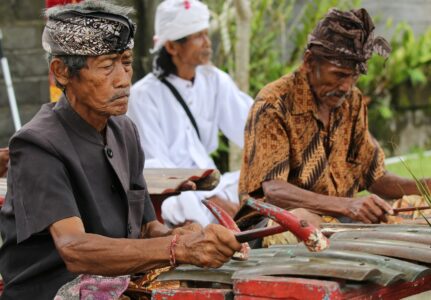
Intangible cultural heritage includes cultures, customs, beliefs, rites, rituals, ceremonies, indigenous knowledge, social customs and traditions, arts, crafts, music, political and ideological beliefs that influence culture and behavior, history, practices concerning the natural environment, religious traditions, food and drink, and traditional clothing. In the modern world, the concept can further be expanded to scientific traditions, language, sports, calendars, cybercultures in the digital world, and emerging new cultures which will become the heritage of the future (Baker, 2013b).
Demonstration of cultural heritage in Libraries, Museums, and Archives
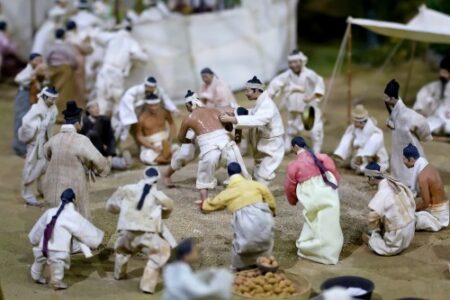
The memory of the past and contested history have not been discussed much in the field of library science, whereas museum studies and archival science is filled with the discourse on these aspects (Baker, 2013a). Traditionally, cultural heritage institutions exhibited physical artifacts and documented knowledge. However, with intangible cultural heritage becoming a mainstream form of cultural heritage, it is being demonstrated in various other ways.
Cultural heritage specialists now employ novel educational venues such as national parks, museums, popular literature, film and television, music, and various multimedia formats (Jameson, 2008) to disseminate knowledge and generate enthusiasm among the general public.
Digitization of Cultural Heritage:

Cultural heritage institutions play an important role in preserving and providing access to cultural heritage materials. Hence, digitization for conservation and digitization for access has become a necessary function. Information professionals must occupy the tools and practices of digitization in order to capture, preserve, and disseminate cultural heritage for the future. Decisions on in-house or outsourced digitization, costs, staffing, collaboration, benchmarking, quality assessment, and content management systems must be determined, based on what is most cost-effective and beneficial for the host institution (Note, 2011b).
Related issues:
Contested history and conflicting narratives, cultural imperialism, memory, identity, censorship, multiculturalism, repatriation of human remains in museums, inclusion, exclusion, nationalism and national identity, cultures of practice in museums, archives and libraries, moral rights to cultural heritage, intellectual property, privacy, and data security issues, ethical use of information, the role of communications media in the representation of cultural heritage, and critical thinking applied to cultural heritage are issues relating to the protection of cultural heritage (Baker, 2013b).
References
Baker, K. (2013a). 1—Exploring cultural heritage in the context of museums, archives and libraries. In K. Baker (Ed.), Information Literacy and Cultural Heritage (pp. 1–39). Chandos Publishing. https://doi.org/10.1016/B978-1-84334-720-0.50001-5 Baker, K. (2013b). 5 – Information literacy and cultural heritage: A proposed generic model for lifelong learning. In K. Baker (Ed.), Information Literacy and Cultural Heritage (pp. 117–133). Chandos Publishing. https://doi.org/10.1016/B978-1-84334-720-0.50005-2 Brumann, C. (2015). Cultural Heritage. In J. D. Wright (Ed.), International Encyclopedia of the Social & Behavioral Sciences (Second Edition) (pp. 414–419). Elsevier. https://doi.org/10.1016/B978-0-08-097086-8.12185-3 Jameson, J. H. (2008). INTERPRETATION OF ARCHAEOLOGY FOR THE PUBLIC. In D. M. Pearsall (Ed.), Encyclopedia of Archaeology (pp. 1529–1543). Academic Press. https://doi.org/10.1016/B978-012373962-9.00423-4 Note, M. (2011a). 4—Photographic image collection management. In M. Note (Ed.), Managing Image Collections (pp. 87–106). Chandos Publishing. https://doi.org/10.1016/B978-1-84334-599-2.50004-0 Note, M. (2011b). 6—Digitization. In M. Note (Ed.), Managing Image Collections (pp. 135–161). Chandos Publishing. https://doi.org/10.1016/B978-1-84334-599-2.50006-4 Pelegrini, S. (2008). WORLD HERITAGE SITES, TYPES AND LAWS. In D. M. Pearsall (Ed.), Encyclopedia of Archaeology (pp. 2215–2218). Academic Press. https://doi.org/10.1016/B978-012373962-9.00323-X Willis, K. G. (2014). Chapter 7—The Use of Stated Preference Methods to Value Cultural Heritage. In V. A. Ginsburgh & D. Throsby (Eds.), Handbook of the Economics of Art and Culture (Vol. 2, pp. 145–181). Elsevier. https://doi.org/10.1016/B978-0-444-53776-8.00007-6
National Institute of Library and Information Sciences (NILIS) is an educational institution attached to the University of Colombo, located within the main University premises. NILIS has close contacts with the local and regional partners with common interests and is a well-established higher education and research institution in Sri Lanka. It conducts Postgraduate (from Postgraduate Diploma to MPhil and Ph.D.), and Higher Diploma, Diploma, and Advanced Certificate courses in Sri Lanka Qualifications Framework (SLQF) levels 2-12. NILIS was established in 2003 by a government ordinance published in 1999 under sections 18 and 24 of the Universities Act No. 16 of 1978.
The NILIS Research Symposium is organized in partnership with the following organizations and institutions.
South Asia Chapter of the Association for Information Science and Technology (ASIS&T) 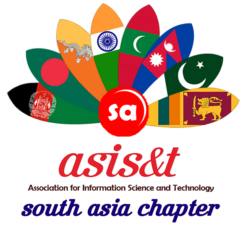 ASIS&T-SA (https://www.asist.org/chapters/saasist/) is the leading South Asian community of academics and practitioners in the field of information science and a part of the worldwide ASIS&T community. The Association for Information Science and Technology (ASIS&T) is the only professional association that bridges the gap between information science practice and research. For nearly 80 years, ASIS&T has been leading the search for new and better theories, techniques, and technologies to improve access to information.
ASIS&T-SA (https://www.asist.org/chapters/saasist/) is the leading South Asian community of academics and practitioners in the field of information science and a part of the worldwide ASIS&T community. The Association for Information Science and Technology (ASIS&T) is the only professional association that bridges the gap between information science practice and research. For nearly 80 years, ASIS&T has been leading the search for new and better theories, techniques, and technologies to improve access to information.
National Library of Sri Lanka (NLSL) 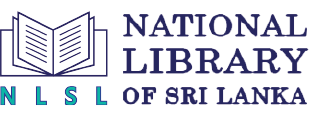 The National Library of Sri Lanka (http://www.natlib.lk) is mainly a research and reference library. It is the main library and information center in Sri Lanka. The current collection size is over 1,000,000 volumes. It is one of the deposit libraries in Sri Lanka and thus has a rich collection of local and international publications. Conservation and preservation of cultural heritage is one of the major objectives of the NLSL.
The National Library of Sri Lanka (http://www.natlib.lk) is mainly a research and reference library. It is the main library and information center in Sri Lanka. The current collection size is over 1,000,000 volumes. It is one of the deposit libraries in Sri Lanka and thus has a rich collection of local and international publications. Conservation and preservation of cultural heritage is one of the major objectives of the NLSL.
Sri Lanka National Archives (SLNA) 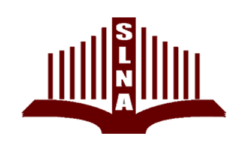 The vision of the Sri Lanka National Archives (http://www.archives.gov.lk) is the effective management and preservation of documentary heritage to protect national identity, accountability, and memory. It systematically manages and preserves evidential records of public authorities and preserve private archives that reflect the history and culture of the nation. The objectives & functions of the SLNA are set out in the National Archives Act No.48 of 1973 and National Archives (Amendment) Act No.30 of 1981.
The vision of the Sri Lanka National Archives (http://www.archives.gov.lk) is the effective management and preservation of documentary heritage to protect national identity, accountability, and memory. It systematically manages and preserves evidential records of public authorities and preserve private archives that reflect the history and culture of the nation. The objectives & functions of the SLNA are set out in the National Archives Act No.48 of 1973 and National Archives (Amendment) Act No.30 of 1981.
Royal Asiatic Society of Sri Lanka (RASSL) 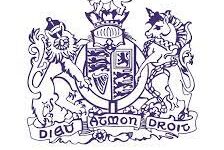 RASSL (https://www.royalasiaticsociety.lk) is the oldest academic institution in Sri Lanka. It was established on 7 February 1845, paralleling the Royal Asiatic Society of Great Britain and Ireland to further oriental research as the Ceylon Branch of the Royal Asiatic Society. The Society played a major role in the establishment of national institutions including the Colombo National Museum, Department of Archaeology, Department of National Archives, Department of Meteorology, Department of Statistics, the University of Ceylon, Historical Manuscripts Commission, and the Sinhalese Dictionary.
RASSL (https://www.royalasiaticsociety.lk) is the oldest academic institution in Sri Lanka. It was established on 7 February 1845, paralleling the Royal Asiatic Society of Great Britain and Ireland to further oriental research as the Ceylon Branch of the Royal Asiatic Society. The Society played a major role in the establishment of national institutions including the Colombo National Museum, Department of Archaeology, Department of National Archives, Department of Meteorology, Department of Statistics, the University of Ceylon, Historical Manuscripts Commission, and the Sinhalese Dictionary.
Symposium Advisor: Dr. Pradeepa Wijetunga, Director – NILIS, University of Colombo Symposium Chair: Dr. Ruwan Gamage, Senior Lecturer, National Institute of Library and Information Sciences, University of Colombo, Sri Lanka. Symposium Co-Chair: Dr. Bhakti Gala, Assistant Professor, School of Library and Information Science, Central University of Gujarat, India. Program Committee:
- Dr. Chiranthi Wijesundara, Library, University of Colombo, Sri Lanka
- Mr. P.G. Premadasa, NILIS, University of Colombo, Sri Lanka
- Mr. Uditha Alahakoon, NILIS, University of Colombo, Sri Lanka
- Ms. Sakeena Alikhan, Library, University of Colombo, Sri Lanka
- Dr. Naresh Agarwal, School of Library and Information Science, Simmons University, USA
- Dr. Md. Anwarul Islam, Dhaka University, Bangladesh
- Dr. Syeda Hina Batool, Institute of Information Management University of the Punjab Pakistan
- Dr. Muhammad Rafiq, Institute of Information Management, University of Panjab, Pakistan
- Ms. Padma Bandaranayaka, National Library of Sri Lanka
- Dr. Udaya Cabral from the NLDSB, National Library of Sri Lanka
- Ms. Dilini Liyanage, Sri Lanka National Archives
- Ms. Himali Weerakoon, Sri Lanka National Archives
- Prof. Nimal de Silva, Royal Asiatic Society of Sri Lanka
- Mr. Muditha Karunamuni, Royal Asiatic Society of Sri Lanka
- Mr. Danesh Wisumperuma, Royal Asiatic Society of Sri Lanka
- Ms. Sandalekha Lawanya Ranasuingha, Royal Asiatic Society of Sri Lanka
The main theme of this year’s symposium is “Cultural Heritage: Bridging the Past, Present and Future Through Libraries, Museums, and Archives”.
Subthemes include, but are not limited to…
- Cultural heritage preserved in libraries etc.
- Access to cultural heritage
- Cultural heritage and the quest for development
- Cultural heritage education in library schools
- Role of libraries in cultural heritage education
- Conservation and restoration of special collections
- Recognizing local, regional, and international cultural heritage
- Research on special collections
- Professional contribution: Librarians, Archivists, Museum Curators, and Historians
- Legislation on the protection of cultural heritage in library collections
- Cultural Heritage at risk
- Outreach and promotion
- Digitalization of cultural heritage artifacts and literature
- Digital libraries as a conservation strategy
- Access to multimedia on cultural heritage
[The call for abstracts is now closed] Abstracts of completed or near-completed original research are called to reach us on or before 30th October 2021. The length of the abstract must be between 250-500 words written in English. The abstract must clearly state the justification of research, theoretical foundations, methodology, results, and conclusions. All authors must present their research at the Conference.
Since this is a multidisciplinary area, abstracts could be from research in Call for studies in Librarianship, Museology, Archaeology, Archival Studies, Historical Studies, Artificial Intelligence, Information Management, etc.
The NILIS Research Symposium will be 100% open and free for participants and presenters from all over the world. The Conference Abstracts will be published as an e-book with an ISBN.
Last date for receiving abstracts: 15.10.2021 Author notification: 23.11.2021 The final version of the abstract and recorded presentation due: 15.12.2021 Symposium date: 24.01.2022
All abstracts should be formatted as follows.
| Document format | Word Processing document (eg: Microsoft Word) |
| Font type & size | The abstract must be typed in Times New Roman point 11. |
| Margins & alignment | 1 inch/2.5 cm (top, right, left, and bottom). Justify text. |
| Title | Font size 12, bold and centered |
| Author name, affiliation, and email for correspondence. | Give the names with initials on the first row, affiliations in the next row, and the email of each author on the last row. Font size 10, bold and centered. If there is more than one author, number authors in superscript. Mark the corresponding author with an Asterix (*) just after the superscript number. |
| Keywords | Minimum 3, Maximum 5 |
| References | APA Style (7th Edition). Limit to 2-5 references. |
| Supporting documents. | Supporting information (such as text, tables, charts, and images) is NOT mandatory. You may upload one PDF document if you think it will help the program committee to make a decision. Such supporting documents will not be retained after the selection process. Only PDF documents of size less than 10 MB are allowed. The document must contain the name of the Corresponding Author at the top left corner. |
Download an example from –> here.
Please submit your abstract using the online form https://forms.gle/AejAzEHikie6SF8C6 before 11.59 pm 15th October 2021 (Colombo Time/IST).
Registration for the symposium is free of charge. Register here: https://bit.ly/3zJoV1u
Agenda
| Time | Details |
|---|---|
| 8.30 | Registration |
| 9.00 | Lighting of the oil lamp (17) |
| 9.05 | National Anthem |
| 9.10 | Welcome Address by Dr. Pradeepa Wijetunge, Director – NILIS, University of Colombo, Sri Lanka |
| 9.15 | Address by the Chief Guest: Senior Professor Chandrika N. Wijeyaratne, Vice Chancellor, University of Colombo, Sri Lanka. |
| 9.25 | Brief video on dances in Sri Lanka courtesy of the Sri Lanka Rupavahini Corporation |
| 9.30 | Address of the Guest of Honor: Senior Professor Premakumara de Silva, Chairman, Board of Management, NILIS, University of Colombo, Sri Lanka. |
| 9.40 | Launch of the Symposium Proceedings |
| 9.45 | Keynote Address by Senior Professor Raj Somadewa, Professor of Archaeology University of Kelaniya, Sri Lanka. |
| 10.15 | Presentation of Mementos |
| 10.20 | Vote of thanks by Symposium Chair: Dr. Ruwan Gamage, Senior Lecturer, NILIS, University of Colombo, Sri Lanka. |
| 10.30 | Tea Break |
| 11.00 | Lead Paper and Technical Session 01 (Cultural Knowledge and Awareness) |
| 12.00 | Lead Paper and Technical Session 02 (Cultural Heritage Collections) |
| 13.15 | Lunch Break |
| 14.00 | Lead Paper and Technical Session 03 (Preservation and Conservation of Cultural Heritage) |
| 14.50 | Technical Session 04 (NILIS Graduate Research) |
| 16.20 | Panel Discussion – Cultural Heritage: Bridging the Past, Present, and Future Through Libraries, Museums, and Archives. |
| 17.00 | Concluding remarks |
